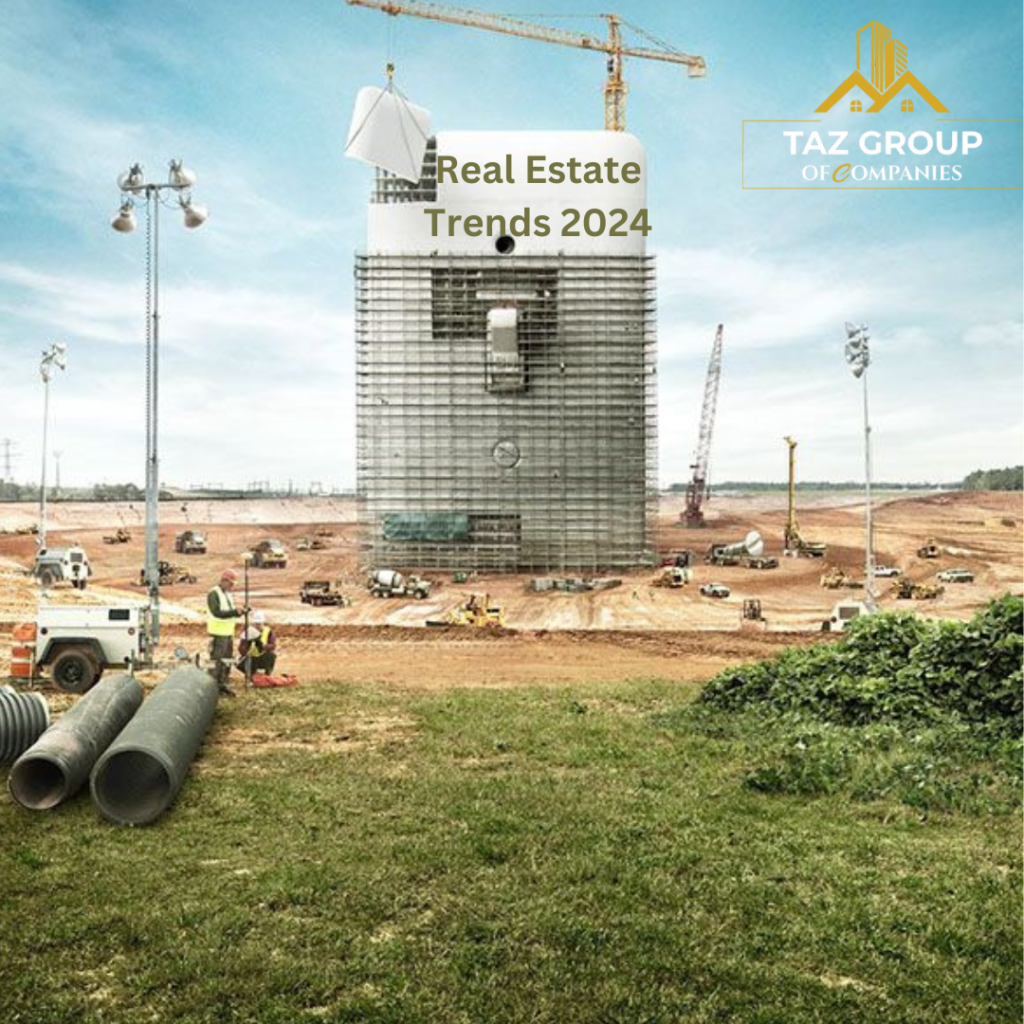Real Estate trends 2024, changes in consumer preferences, technology, and international economic conditions are bringing about a significant impact on the real estate market. The blog examines the major themes that are predicted to shape the real estate industry in 2024 and provides opportunities and difficulties that may be encountered. Looking at real estate industry trends in the context of recent and current events is one of the best ways to predict how the industry will be in the future.
Let’s explore industry trends that are reshaping real estate.
Sustainable Living Spaces.
In 2024, sustainability is not just a word but also a major factor influencing real estate decisions. Investors and Homebuyers are prioritizing eco-friendly and energy-efficient properties. The focus on sustainable living impacts both residential and commercial real estate projects from solar-powered residences to green building designs. Developers are focusing on environmental features, not only for market demand but also to contribute to a better and more sustainable future.
Tech-Driven Smart Houses:
In 2024, there will be significant improvements in the use of technology in houses. Smart houses with Internet of Things (IoT) gadgets, artificial intelligence, and advanced automation systems are quickly taking over as the new standard. These smart technologies, which are remotely controlled security systems to intelligent climate management, are luxurious requirements with unexpected amenities. The real estate industry is changing due to technology, homebuyers, and developers are adopting these technologies to stay in the competitive market.
Co-Living Residential Areas.
In 2024, co-living will become more and more popular, especially in modern cities. Co-living refers to a housing arrangement where individuals with shared interests, values, or lifestyles choose to live together in a mutual setting. Residents often share common areas, such as kitchens and living rooms, fostering a sense of belonging and social interaction.
The desire for flexibility reduced financial burden, and saved expenses for the future. In a digital world, the need for social connections is an essential human desire. Co-living spaces provide an environment where residents can build meaningful relationships, share experiences, and create a supportive community. These co-living houses are also a big change in 2024.
Reshaping Commercial Real Estate:
In 2024, there will be a major change in the features of the commercial real estate market. Recent events all over the world have increased the trend of remote work, which has made office spaces more important. Commercial property design and use are being impacted by flexible work schedules and an emphasis on employee well-being. Hybrid workplaces, office structures, and a focus on creating inspirational and cooperative work environments that enhance productivity.
Embracing Virtual Reality in Real Estate:
In the real estate industry, Virtual reality (VR) is become a significant changer. In 2024, Home buyers can take virtual tours of the house for the comfort of their homes. In conclusion, embracing virtual reality in real estate marks a paradigm shift in how properties are discovered and experienced. From immersive property tours to architectural visualization, VR technology enhances the way individuals engage with the real estate market.
As the industry continues to adopt and refine virtual reality applications, we can anticipate a more dynamic, accessible, and visually compelling future for real estate exploration. This not only enhances the buying experience but also broadens the reach for international investors and buyers.

Adaptive reuse projects in Real Estate:
The idea of reuse projects becoming more popular in the real estate industry involves existing structures to serve new functions, and breathing new life into historical or abandoned buildings. This exploration of adaptive reuse projects delves into the innovative and sustainable transformations that redefine the landscape of real estate development. Adaptive reuse projects offer a unique opportunity to preserve architectural heritage while meeting contemporary needs.
Rather than demolishing existing structures, adaptive reuse minimizes the environmental impact associated with new construction. Reusing buildings reduces construction waste, conserves energy, and often incorporates eco-friendly features, aligning with the global move for more sustainable development practices. This not only addresses the challenge of urban blight but also contributes to the creation of vibrant, livable communities.
Conclusion:-
The creativity and adaptation are essential in 2024 as the real estate industry continues to change. Redefining the residential environment includes co-living spaces, tech-driven properties, virtual experiences, and sustainable living. Blockchain technology and redesigning office spaces are transforming to create new benchmarks. The trends in 2024 are successfully navigating the dynamic and exciting world for everyone. The future is not about only building but also needs designing spaces that meet the goal of the people and changing requirements.
The global real estate market’s development reflects a common trend of population increase, urbanization, and improving consumer living standards. Real estate market participants are keeping up with the global trend toward higher living standards. Consumers are prepared to put trust in the entire process, small businesses are creating equity funds, and increasing investment.



